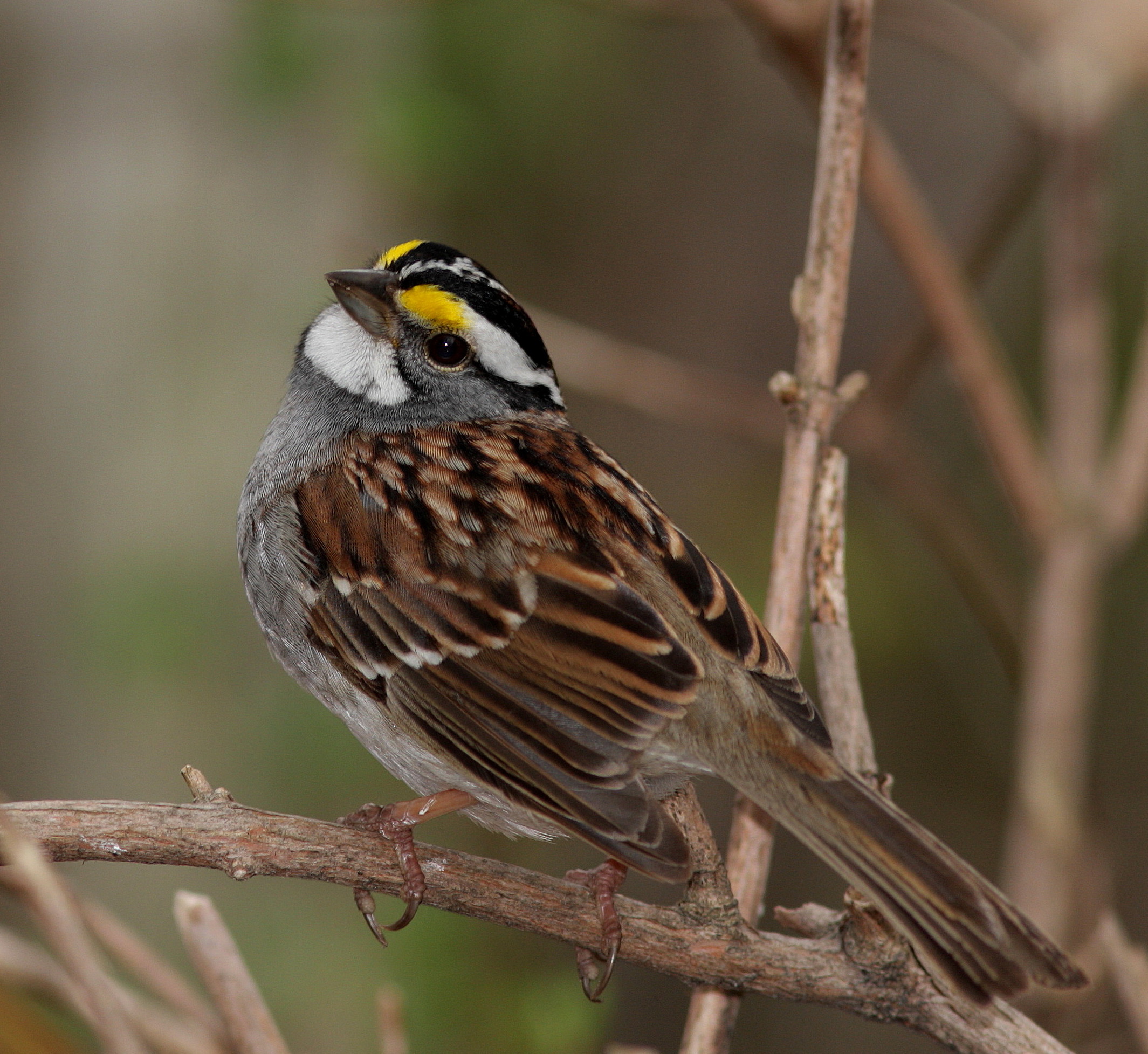
Zonotrichia albicollis
TAXONOMY
Fringilla albicollis Gmelin, 1789, Philadelphia, Pennsylvania.
OTHER COMMON NAMES
English: White throat, Canada bird; French: Bruant а gorge
blanche; German: Weisskehlammer; Spanish: Gorriуn
Gorjiblanco.
PHYSICAL CHARACTERISTICS
6–7 in (15–17 cm); 0.9 oz (26 g). Adults have a pale or white
stripe above the eye that is yellow in front of the eye, a pale
or white median crown stripe, a white throat, brown or rusty
brown back, and a pale grayish brown breast that often is
slightly streaked. Sexes similar. Juveniles have an indistinct
median crown stripe and their breast and flanks are heavily
streaked with brown.
DISTRIBUTION
Breed from central Yukon to northern Manitoba and across
northern Ontario through central Quebec and Newfoundland;
also south to New York, Michigan, Manitoba, and British
Columbia. Winter along the Pacific Coast and in the east from
Ontario, Michigan, and Colorado to Texas, the Gulf Coast,
and Florida.
HABITAT
Inhabit brush during all seasons. They most often breed in
fairly open mixed woodlands, commonly where spruce, balsam
fir, birch, and aspens predominate. In winter they are found in
dense deciduous thickets or brush piles, often along the edge
of woodlands or in woodland clearings.
BEHAVIOR
During breeding season, males sing persistently, usually from
an inconspicuous perch. In winter, they are often found in
small, loose flocks and sometimes associate with other species
of sparrow.
FEEDING ECOLOGY AND DIET
In breeding season, they principally eat insects, but during migration
and in winter they eat mostly seeds.
REPRODUCTIVE BIOLOGY
Monogamous. The nest is placed on or near the ground in areas
where there are small trees interspersed with low vegetation.
Nesting occurs from late May through early July. Three
to seven (usually four) eggs are incubated for 11–13 days, and
young fledge after 8–9 days. Both parents feed the young.
CONSERVATION STATUS
Not threatened.
SIGNIFICANCE TO HUMANS
None known.
Photo Gallery of - White-throated sparrow




 Animalia Life
Animalia Life